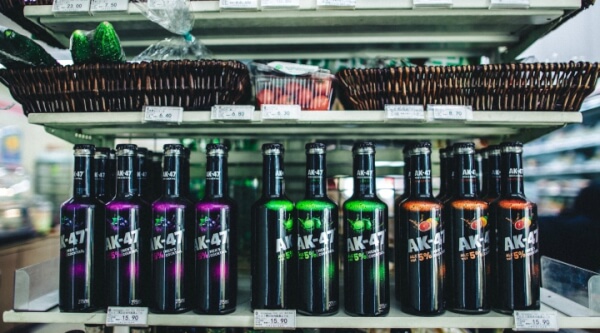GlobalWebPay Alternative
GlobalWebPay is not as expensive as traditional banks out there however, for some transfers, Wise might be able to save you more money.

If you routinely deal with money in different currencies, you know that the price of goods affect a currency’s value. You’d also probably guess that the central bank of each country has no small part in regulating some of these consumer expenses. Wholesale price index (WPI) is part of that. WPI is one way economists use to measure price levels in a country. If you want to be able to predict whether your currency value will go up or down, you might want to keep an eye on WPI news.
Before you dive headfirst into WPI indices, however, you’ll probably want to know exactly what a WPI is, how’s it’s measured, and why it’s even measured that way. This guide should help you find answers to exactly those questions and more with a simple introduction to this index.
WPI, or wholesale price index, is the price of a certain class of goods at the wholesale level. But what exactly is wholesale level, you ask?
Factories and manufacturers produce a lot of goods. As such, they often sell to retailers in bulk at a lower price than if they would have sold each item individually. These retailers, usually stores and supermarkets, then sell these goods at a higher price to regular people - consumers.
The wholesale price is the price that retailers pay the original manufacturers. The retail price is the price that regular consumers pay these retailers for the same goods.
WPI is referencing the wholesale, not the retail, price of goods. It’s measuring the average price change at this wholesale level, usually expressed as a percentage or ratio.
Suppose you read somewhere that the WPI of country X is 120 in 2016. What would that mean?
WPI always starts with a base year for comparison. For the sake of the example, let’s say that, for country X, the base (comparison) year is 2012. That would mean that the total wholesale prices of goods for country X in 2012 is equalized to 100 points on the WPI scale. If the 2016 WPI was 120, that would mean that, in 2016, the wholesale prices in that country increased by 20% from the base year 2012.
There are thousands, if not millions, of goods you can buy. It would be nearly impossible to measure the price changes of all the goods available every month, or even every year. Wholesale price index doesn’t measure all these goods, but, instead, a select number of goods. The measured goods are ones economic experts deem important to the country’s consumer households.
Sometimes the WPI’s group of measured goods is referred to as a basket or market basket.
This basket is an imaginary basket, of course. And what goes into this basket is goods considered important. Initially, when governments measured price changes, they only included a few dozen items in this basket like beef, leather, wool, corn, etc. These days, however, to match ever-changing consumer behavior and purchases, what’s in these market baskets has changed quite a bit.
If we hope for WPI to accurately track spending habits of everyday consumers, the contents of that basket is very important. The WPI should accurately track price changes of goods that local households actually care about. In smaller countries, only about 100-200 goods are calculated into the WPI. Whereas in larger countries, like the UK and the USA, thousands of products are included.
So, why do you need to measure the wholesale prices of goods?
As you well know, prices change all the time. These variations could be related to many things - local politics, natural disasters, market fluctuations, foreign country policy changes, and more. Regardless of the reason, when the price of goods and services go up and then stay up, , it’s what experts call inflation.
Inflation is a bit complex and has wide-ranging effects on a country’s economy. Countries measure inflation in many ways. As such, there are different schools of thought among economists regarding the best way to measure it. One of the ways countries measures inflation is through the WPI.
Apart from inflation, however, WPI also is a good indicator of cost of living because it measures price trends that affect common consumers. A high WPI without an equivalent income rise would mean that local households are facing increasing financial pressure - higher prices without the money to pay for the difference. As such, economists would then predict a downturn in consumer spending.
Besides helping economists predict consumer spending, WPI also helps measure manufacturing sector health. A higher WPI may indicate, for example, that the manufacturing sector’s income is increasing. In general, this would be a sign of health for an economy.
Which means, apart from inflation there are multiple ways that the WPI index can assess a country’s economic health.
As explained in the last section, many economists use WPI to measure inflation, but they also use other indicators such as the Consumer Price Index (CPI). Unlike WPI, CPI focuses on the prices of goods brought by consumers - retail prices - rather than the wholesale prices at which manufacturers sell the goods to retailers.
The United States began measuring wholesale prices through the WPI in 1902, but later switched to Producer Price Index (PPI) in 1978. Though the terminology is different, PPI actually measures the same kinds of goods at the same level as WPI does, so it’s essentially the same measure, but under a different term.
Investors are often interested in WPI figures to track the general health of manufacturing sector by noting wholesale price changes.
As an indicator of a country’s inflation, WPI is even more important because inflation rates are usually heavily factored into central bank currency interest rate decisions. A country’s central bank decisions in turn affects a currency’s value. Thereofe, WPI affects the value of a currency indirectly.
Now that you know how GDP affects exchange rates, a word.
Banks often charge hefty fees for foreign and multi-currency accounts. And if you’ve already tried managing multiple accounts in multiple countries, you know it’s rarely simple.
Wise could help. With Wise, it’s free to open a borderless multi-currency account with no monthly fees. There, you can manage and send dozens of different currencies all from the same account. All around the world. (Likely, for a lot cheaper than your bank.)
Give it a try. Check out Wise today.
| This publication is provided for general information purposes only and is not intended to cover every aspect of the topics with which it deals. It is not intended to amount to advice on which you should rely. You must obtain professional or specialist advice before taking, or refraining from, any action on the basis of the content in this publication. The information in this publication does not constitute legal, tax or other professional advice from TransferWise Limited or its affiliates. Prior results do not guarantee a similar outcome. We make no representations, warranties or guarantees, whether express or implied, that the content in the publication is accurate, complete or up to date. |
|---|
*Please see terms of use and product availability for your region or visit Wise fees and pricing for the most up to date pricing and fee information.
This publication is provided for general information purposes and does not constitute legal, tax or other professional advice from Wise Payments Limited or its subsidiaries and its affiliates, and it is not intended as a substitute for obtaining advice from a financial advisor or any other professional.
We make no representations, warranties or guarantees, whether expressed or implied, that the content in the publication is accurate, complete or up to date.

GlobalWebPay is not as expensive as traditional banks out there however, for some transfers, Wise might be able to save you more money.

Looking for Christmas savings tips? You’re in the right place. As the costs of living increase, and rising interest rates push up mortgage repayments for many...

For customers of Wise Payments Ltd, sending or holding money in the Wise account, we safeguard it in keeping with Wise’s regulatory obligations in the UK. We...

You might have heard TV panels full of economists and policy experts talking about the size of an economy. Germany, for instance, is considered one of the...

If you go to a supermarket to buy groceries every month, you can sometimes find yourself check whether the same things were less or more expensive the last...

If you’re a frequent traveller or an expat, dealing with exchange rates is probably a reality of life. In fact, you’ve probably looked at how to get the best...